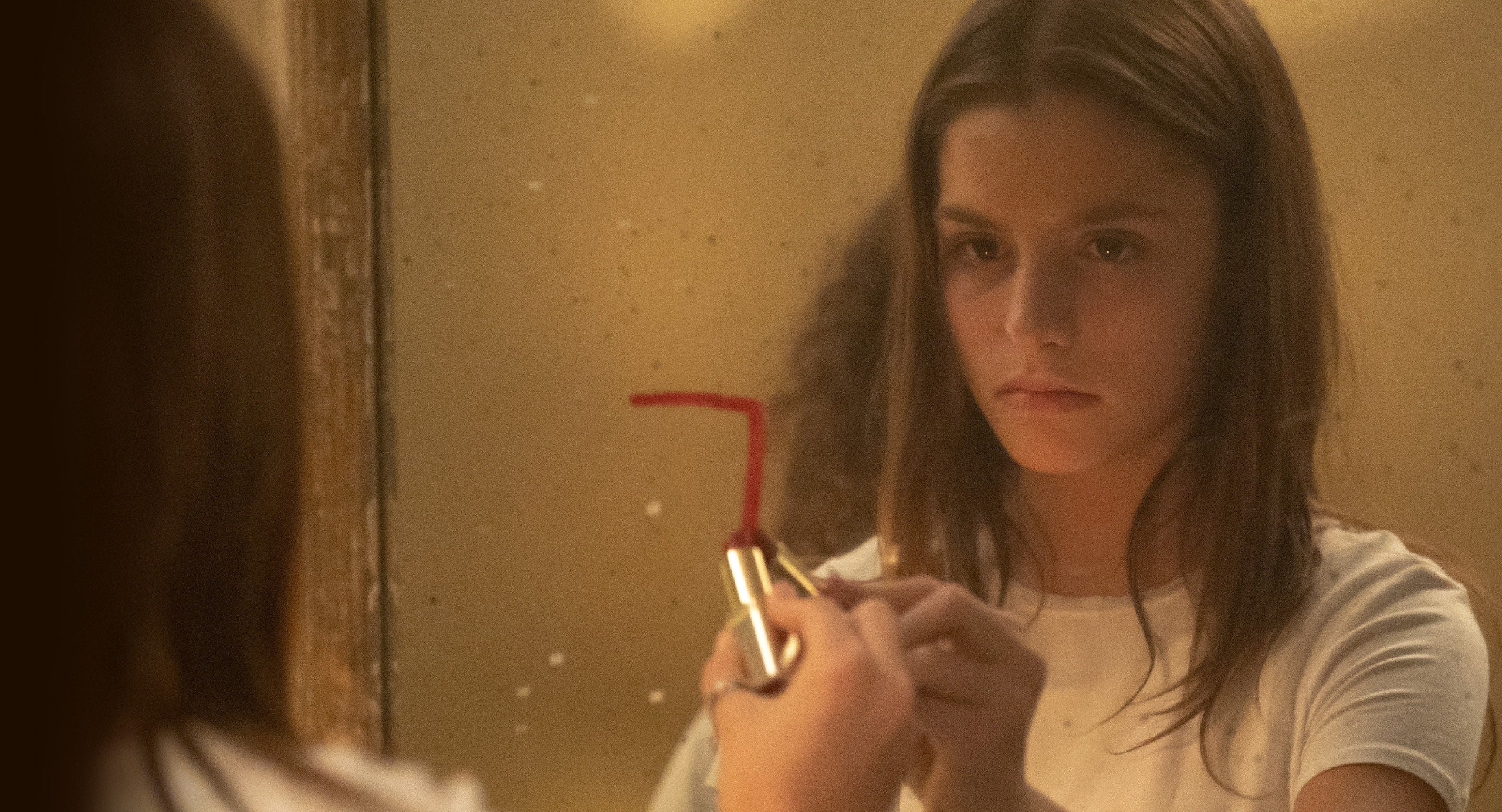Queen of Spades – Film Review
Published February 14, 2024

Queen of Spades, a horror flick directed by Patrick White, which he co-wrote with John Ainslie and Svyatoslav Podgaevskiy, emerges as a venture into the oft-tread domain of supernatural dread, particularly the summoning-gone-wrong narrative. Within the expansive genre of horror, films can swing dramatically from bone-chilling masterpieces to forgettable duds. Unfortunately, despite some notable attempts to innovate, Queen of Spades ends up veering closer to the latter, delivering a lackluster experience that leaves much to be desired both in terms of scares and originality.
The premise itself holds promise. The film delves into a group of four teenagers led by Ava Preston‘s character, Anna, as they unwittingly conjure an ancient evil known as the Queen of Spades through a ritual they find amusingly archaic. The legend, as foretold, warns of the horrors awaiting those who dare summon her. Accompanying Anna in this perilous endeavor are Mary (played by Kaelen Ohm), Katy (Jamie Bloch), Sebastian (Eric Osborne), and Matthew (Nabil Rajo), each bringing their own personalities into the fold but sadly, not enough depth.
Despite a promising setup, the execution fails to rise above the generic tropes that plague many contemporary horror films. The ritual, meant to be the film’s pivotal, spine-chilling moment, feels derivative, reminiscent of countless other films where teens flirt with forces beyond their comprehension. From here, predictability becomes a constant companion, with the narrative unfolding in a linear, expected trajectory that diminishes any sense of suspense or terror.
The characterization further muddies the film’s potential. While Ava Preston as Anna makes a valiant effort to imbue her role with a blend of naiveté and bravery, the lack of character development for the ensemble casts a shadow over their performances. Each character seems tethered to one-dimensional archetypes, from the skeptic to the believer, without offering viewers a chance to connect or empathize. This surface-level portrayal results in a detachment that undermines the fear factor; after all, horror thrives when the audience cares about the fates of those on screen.
Queen of Spades also attempts to explore the theme of consequences – a rich vein for horror when mined effectively. The idea that youthful indiscretion and curiosity can lead to unimaginable horrors is a timeless theme, yet the film only scratches the surface. The potential for a psychological exploration of guilt, blame, and the struggle for redemption is there, yet it remains largely unexplored, lost in the film’s focus on trying to deliver jump scares that feel more like obligatory genre ticks than genuine moments of terror.
Visually, the film struggles to carve out a distinct aesthetic or atmosphere. While there are attempts at crafting a sense of looming dread with dimly lit corridors and the ominously pale visage of the Queen herself, these elements feel overly familiar. The cinematography and special effects don’t manage to elevate the film beyond its shortcomings in narrative and character development. Rather than offering a fresh take or visually stunning rendition of a supernatural horror, Queen of Spades treads water in a sea of genre clichés.
The screenplay, co-written by White, Ainslie, and Podgaevskiy, suffers from stilted dialogue and a lack of tension. Moments intended to shock or provoke thought instead fall flat, exacerbated by pacing that neither builds suspense effectively nor provides enough downtime to allow for character or story depth to develop. It’s a delicate balance that many horror films struggle to achieve, and unfortunately, Queen of Spades is no exception.
In fairness, Queen of Spades does not lack ambition. Its premise invites intrigue, and the film’s nods to folklore and the exploration of ancient rituals could have paved the way for a rich, culturally infused horror story. Yet, the potential for a deeper narrative or a more nuanced exploration of the themes at hand is squandered in favor of a predictable plot and reliance on jump scares that serve as poor substitutes for genuine horror.
Queen of Spades ultimately falls short as a memorable addition to the horror genre. While its cast, particularly Ava Preston, makes earnest attempts to bring their characters to life, they’re hampered by a script that offers little room for depth or development. The film’s adherence to tired horror clichés and a lack of originality in both story and execution leaves it struggling to make an impact. As it stands, Queen of Spades serves as a cautionary tale of the pitfalls of failing to innovate within a genre as rich and varied as horror. Fans of the genre may find fleeting moments of entertainment, but for those seeking a fresh, gripping, and genuinely terrifying experience, the film regrettably does not deliver.
